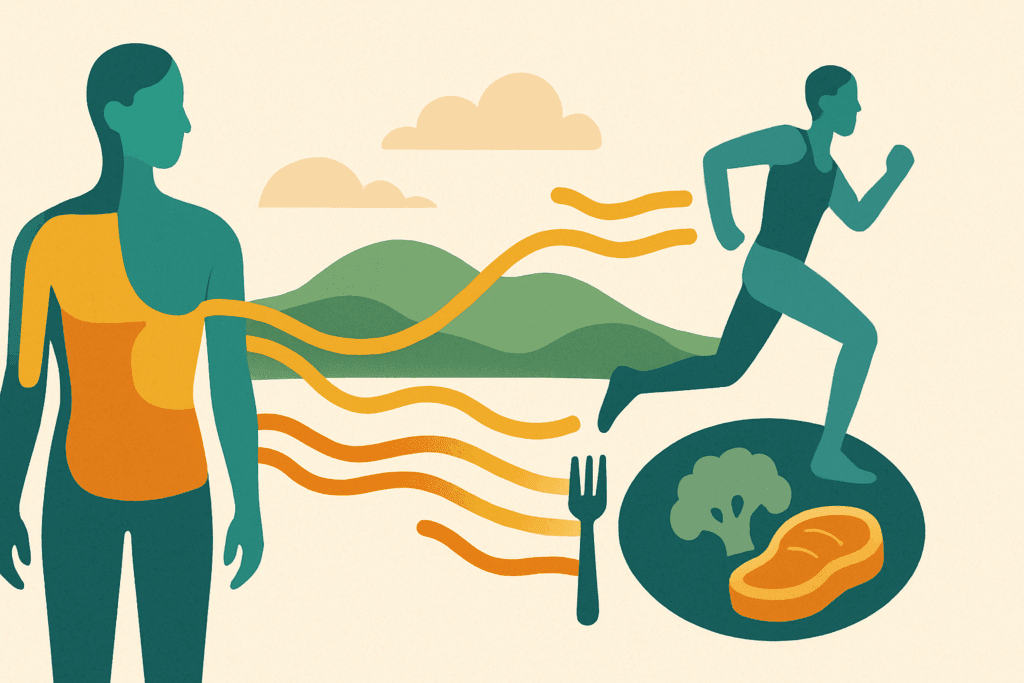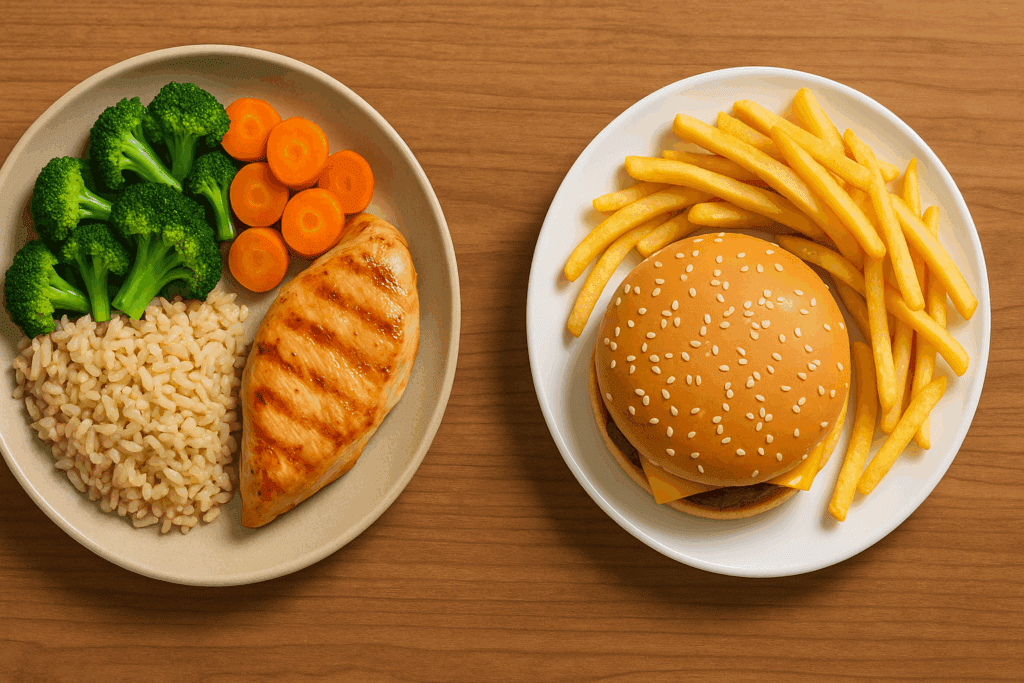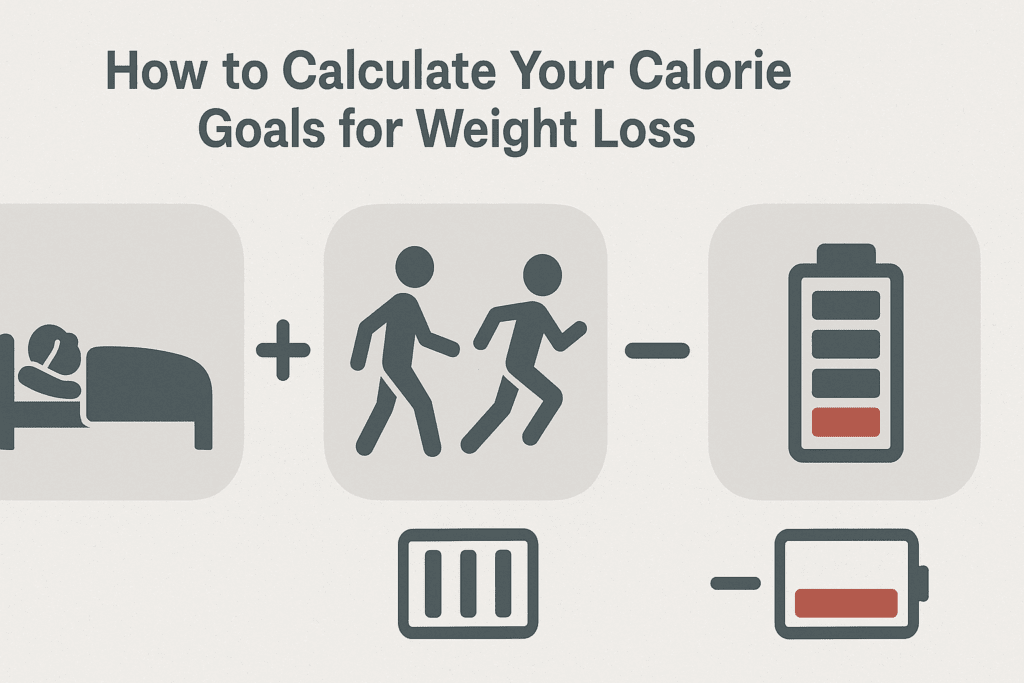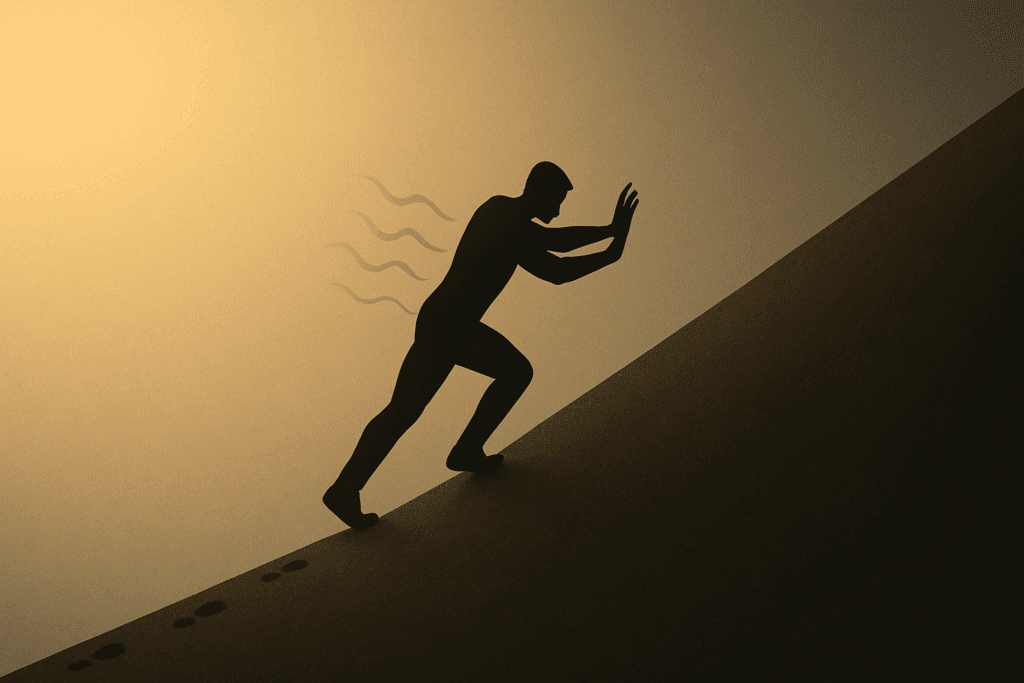Understanding the Science of Calories and Weight Loss
Weight loss often begins with a deceptively simple equation: burn more calories than you consume. While this idea forms the foundation of many popular diets and fitness programs, the underlying biology is far more complex. Calories are units of energy, and the human body, a metabolically dynamic system, responds to calorie intake and expenditure in intricate ways. Understanding how many calories to burn to lose weight involves a blend of metabolic science, nutrition strategy, and individualized factors such as age, gender, body composition, and activity levels.
You may also like: Expert-Backed Weight Loss Tips for a Healthier Lifestyle: What You Need to Know for Long-Term Weight Control and Wellness
From a physiological standpoint, weight loss occurs when there is a consistent energy deficit. This means the number of calories you burn exceeds the number of calories you consume over a sustained period. The widely cited guideline that one needs to create a deficit of approximately 3,500 calories to lose one pound of body fat offers a useful benchmark, but it doesn’t account for metabolic adaptation, hormonal influences, or variations in lean mass. In reality, determining how many calories should I burn for cutting is not a one-size-fits-all calculation—it is a dynamic and evolving process influenced by many variables.
For those exploring fat loss through a structured plan, whether by cutting back eating or increasing physical activity, understanding the concept of energy balance is essential. Calories lost to lose a pound do not occur in isolation—they result from a comprehensive plan that includes dietary adjustments, increased physical movement, and adequate rest. Without an informed approach, cutting calories too drastically or burning calories at unsustainable levels can backfire, leading to muscle loss, slowed metabolism, or nutritional deficiencies.

How Calorie Deficit Works in Real Life
A calorie deficit occurs when the body uses more energy than it receives through food and beverages. This triggers the body to tap into stored energy reserves, namely fat stores, to meet its metabolic needs. But how many calories do I need burn to lose weight without risking health? The answer depends on total daily energy expenditure (TDEE), which includes your basal metabolic rate (BMR), physical activity, and the thermic effect of food.
Your BMR represents the number of calories your body requires to maintain basic physiological functions like breathing, circulation, and temperature regulation. TDEE, which adds in movement and digestion, is the total number of calories you burn in a day. By calculating your TDEE and subtracting a moderate number—typically 500 to 1,000 calories per day—you can create a safe, sustainable caloric deficit to support fat loss.
However, it’s important to note that the 3,500-calorie rule (used to estimate the calories lost to lose a pound) is an oversimplification. The human body does not burn fat in such a linear, mechanical fashion. As you lose weight, your metabolic rate often decreases due to a reduction in lean body mass and energy requirements. This metabolic adaptation means that the longer you maintain a calorie deficit, the more your body tries to conserve energy. As a result, many individuals experience plateaus during their weight loss journey.
To overcome this, many nutritionists and exercise physiologists recommend cycling calorie intake and incorporating refeed days or diet breaks. These strategies can help boost metabolism and prevent hormonal imbalances, especially in individuals who have been cutting back eating for prolonged periods. Understanding the balance between how many calories should I burn for cutting and how frequently I should adjust intake is key to long-term success.

The Role of Exercise in Caloric Burn and Cutting
Exercise is a critical component of a comprehensive fat-loss plan, particularly for increasing caloric expenditure and preserving lean muscle mass during a calorie deficit. But not all exercise is equal when it comes to burning calories. High-intensity interval training (HIIT), resistance training, and moderate-intensity cardiovascular workouts all contribute differently to daily energy expenditure.
When evaluating how many calories to burn to lose weight, it’s useful to consider the energy cost of various exercises. For example, a 155-pound person burns approximately 250–400 calories in 30 minutes of moderate cardio, such as brisk walking or cycling. In contrast, the same person could burn 400–600 calories with vigorous running or a high-intensity interval session. Additionally, resistance training may not burn as many calories during the workout itself, but it increases excess post-exercise oxygen consumption (EPOC), meaning your body continues to burn calories for hours after you finish lifting weights.
Moreover, preserving muscle through strength training is essential for maintaining metabolic rate during cutting. The more muscle mass you retain, the higher your BMR, which helps you burn more calories even at rest. This becomes especially important when creating a calorie deficit. People often focus solely on how many calories do I need burn to lose weight, forgetting that muscle loss can sabotage long-term progress by reducing metabolic efficiency.
A balanced approach—combining moderate cardiovascular activity with consistent resistance training—offers the most effective path toward fat loss. It allows you to maximize the number of calories burned while minimizing the loss of lean mass. It also supports physical performance, mental well-being, and sustainable habits, all of which contribute to long-term success.

Cutting Back Eating Without Cutting Out Nutrition
Creating a calorie deficit doesn’t necessarily mean starving yourself or slashing your food intake to unhealthy levels. In fact, cutting back eating too aggressively can have negative consequences on metabolism, mood, and overall health. The goal should be to reduce caloric intake while still meeting your body’s nutritional needs.
To achieve this, focus on food quality over quantity. Whole foods such as lean proteins, vegetables, fruits, legumes, and whole grains offer higher nutritional density per calorie compared to ultra-processed foods. For example, 300 calories of grilled chicken and steamed vegetables provides vastly more satiety and micronutrients than 300 calories from sugary snacks or fried foods. When people ask how many calories to burn to lose weight, they often overlook the importance of what those calories consist of.
A nutrient-dense approach ensures that even when you’re cutting back eating, your body receives sufficient protein, fiber, vitamins, and minerals to support essential functions. Protein, in particular, is critical for preserving lean mass and promoting satiety. Research consistently shows that higher-protein diets improve body composition during caloric restriction. Additionally, fiber-rich foods like vegetables, legumes, and whole grains help regulate appetite and digestion.
Planning meals strategically—such as front-loading protein at breakfast or reducing evening snacking—can help create a moderate calorie deficit without feeling deprived. Small behavioral changes, such as eating slowly, reducing portion sizes, drinking water before meals, and limiting liquid calories, can also contribute to significant energy reductions over time. Ultimately, cutting back eating should be viewed not as a short-term sacrifice but as a long-term shift toward more mindful, nourishing food choices.

How to Calculate Your Calorie Goals for Weight Loss
Personalizing your calorie goals is one of the most important steps in designing an effective fat-loss plan. While general guidelines provide a starting point, the most accurate approach involves calculating your unique TDEE and creating a deficit based on your goals, body composition, and lifestyle. This is where many individuals turn to the question: how many calories should I burn for cutting, given my specific circumstances?
To begin, estimate your BMR using formulas like the Mifflin-St Jeor equation, which accounts for age, sex, weight, and height. Then multiply the BMR by an activity factor that represents your daily movement. Sedentary individuals might multiply by 1.2, while highly active people could multiply by 1.7 or more. The resulting number is your TDEE—the baseline for how many calories you burn daily.
From here, determine your deficit. A 500-calorie daily deficit is generally considered safe and sustainable, leading to approximately one pound of weight loss per week. This aligns with the idea that around 3,500 calories lost to lose a pound, though real-world outcomes vary. More aggressive deficits, such as 1,000 calories per day, may produce faster results but should be monitored closely to prevent lean tissue loss or hormonal disruption.
It’s also important to reassess calorie needs regularly. As weight decreases, your TDEE drops, and the same deficit may no longer produce the same results. This dynamic nature of metabolism highlights the need for adaptive calorie planning. Using tools like wearable trackers, food logs, or working with a registered dietitian can help ensure your goals remain aligned with your physiology.

The Psychological Side of Calorie Cutting and Fat Loss
While calorie math is foundational to weight loss, the psychological aspects of cutting cannot be overlooked. Sustaining a calorie deficit over weeks or months requires motivation, discipline, and mental resilience. People often start with enthusiasm, only to face fatigue, cravings, or emotional setbacks as time progresses. Understanding how to manage these challenges can be just as important as knowing how many calories to burn to lose weight.
Psychological hunger—often triggered by stress, boredom, or habit—can undermine even the most well-planned calorie strategy. Identifying your eating triggers and developing coping strategies, such as mindfulness meditation, structured meal timing, or healthier stress-relief outlets, can help maintain dietary discipline. Emotional awareness also reduces the likelihood of impulsive overeating or “cheat” days that spiral into extended binges.
Additionally, the way we think about cutting back eating shapes our relationship with food. Rather than framing calorie reduction as deprivation, it’s more helpful to reframe it as optimization—choosing foods and habits that serve long-term health goals. Incorporating flexible dieting principles, such as the 80/20 rule (eating nutrient-dense foods 80% of the time while allowing for enjoyment 20% of the time), can promote a healthier psychological balance.
Support systems matter, too. Engaging with a community—whether through friends, online groups, or professional coaching—provides accountability and encouragement. Sharing goals, setbacks, and progress with others can reinforce commitment and reduce feelings of isolation. When motivation wanes, revisiting your “why”—the core reason behind your desire to lose fat—can reignite purpose and focus.

Metabolic Adaptation and the Weight Loss Plateau
A lesser-known yet critical aspect of fat loss is the body’s natural tendency to resist sustained weight reduction. This phenomenon, known as metabolic adaptation or adaptive thermogenesis, refers to the decline in energy expenditure that occurs when calorie intake is consistently reduced. While it makes evolutionary sense—helping humans survive during times of food scarcity—it can complicate modern efforts to lose weight.
When people ask how many calories should I burn for cutting, they often fail to consider that their metabolism will respond to the deficit by becoming more efficient. Over time, hormones such as leptin, thyroid hormone, and ghrelin shift, making weight loss harder and hunger stronger. This often leads to a frustrating plateau despite maintaining the same calorie deficit and workout regimen.
To counteract metabolic slowdown, many experts recommend periodic recalibrations of intake and expenditure. Refeed days, where calorie intake is increased temporarily, particularly through carbohydrates, can help replenish glycogen stores and support thyroid function. Diet breaks—short periods of maintenance-level eating—may help preserve metabolic rate and mental well-being during extended cutting phases.
In some cases, increasing physical activity rather than reducing calories further may be a safer and more effective way to create additional deficit. It’s essential to listen to your body and seek professional guidance if fatigue, hormonal imbalances, or persistent plateaus occur. A thoughtful approach that acknowledges metabolic adaptation can prevent burnout and promote sustainable progress.
Final Thoughts: Setting Realistic Expectations for Long-Term Success
As you evaluate how many calories to burn to lose weight and what strategies work best for your body, it’s crucial to set expectations that align with biological reality and mental well-being. Safe and effective fat loss is not about rapid transformations or unsustainable extremes. It’s about consistent habits, informed adjustments, and a long-term commitment to health.
While cutting back eating is one part of the equation, quality nutrition, strength training, adequate sleep, and stress management all play vital roles. Weight loss should never come at the cost of muscle mass, metabolic function, or psychological health. The best results come from sustainable strategies that respect the complexity of the human body and support all aspects of well-being.
As a guiding rule, aim for modest, steady progress. If your goal is to lose a pound per week, remember that this equates to roughly 3,500 calories lost to lose a pound, which can be achieved through a daily 500-calorie deficit. Be flexible and patient—your calorie needs will change, and adjustments will be necessary along the way. By consistently evaluating how many calories do I need burn to lose weight and adapting as you go, you’ll position yourself for results that last.
Frequently Asked Questions: How Many Calories to Burn to Lose Weight? Expert Answers on Cutting, Calorie Goals, and Sustainable Fat Loss
1. Can your body adapt to burning fewer calories over time, and how does this affect cutting?
Yes, your body can absolutely adapt by reducing its energy needs over time, a process known as metabolic adaptation. As you lose weight, your basal metabolic rate (BMR) naturally decreases, meaning you burn fewer calories at rest than you did at a higher weight. This can make it harder to maintain fat loss without adjusting your calorie intake or physical activity levels. That’s why understanding how many calories should I burn for cutting isn’t just a one-time calculation—it evolves with your progress. Monitoring changes in weight, energy levels, and hunger can help you recalibrate your cutting strategy so you don’t fall into a plateau caused by metabolic slowdown.
2. Is there a difference between calories burned from exercise versus calories saved through cutting back eating?
Yes, there is a practical and psychological distinction between the two, even though both contribute to the overall energy deficit. Calories saved by cutting back eating are often more predictable and easier to track, whereas calories burned through exercise can vary widely depending on workout intensity, duration, and even daily stress or sleep quality. Moreover, creating a deficit entirely through exercise may lead to increased hunger and unintended compensation through extra eating. When planning how many calories to burn to lose weight, most experts recommend a combined approach: reduce intake moderately while increasing output through movement. This balance helps you preserve muscle, maintain energy, and improve long-term adherence.
3. How can someone estimate how many calories they need to burn daily to stay in a healthy deficit?
The most effective method involves first calculating your total daily energy expenditure (TDEE), which factors in your basal metabolic rate and physical activity. From there, subtracting 500 to 750 calories per day is often recommended for sustainable fat loss, aligning with the widely cited goal of about 3,500 calories lost to lose a pound. However, this number isn’t universal. For smaller individuals or those with slower metabolisms, even a 300-calorie deficit may produce results. The real answer to how many calories do I need burn to lose weight lies in consistent tracking, adjusting based on results, and listening to your body’s cues along the way.
4. What role does non-exercise activity thermogenesis (NEAT) play in cutting fat?
NEAT, which includes all physical activity that isn’t deliberate exercise—like walking, fidgeting, or doing housework—can significantly affect daily calorie burn. In fact, for some individuals, NEAT contributes more to energy expenditure than formal workouts. By increasing your NEAT, you can create a more substantial energy deficit without over-relying on structured exercise or excessively cutting back eating. For those wondering how many calories to burn to lose weight efficiently, incorporating more movement into your everyday life—like standing at your desk or walking while on phone calls—can be a game-changer, especially when your workout time is limited.
5. Why do some people lose weight faster than others even when following the same calorie goals?Genetics, muscle mass, hormonal balance, and gut microbiome diversity can all influence how efficiently your body uses and stores energy. For example, someone with a higher percentage of lean muscle tissue will burn more calories at rest than someone with the same weight but more fat mass. Hormonal factors, such as insulin sensitivity or thyroid function, also play a major role in weight regulation. Therefore, the equation of how many calories should I burn for cutting must always account for individual variation. Even with identical calorie deficits, two people can experience vastly different weight loss trajectories due to these underlying factors.
6. How do sleep and stress influence the effectiveness of a calorie deficit?
Both poor sleep and chronic stress can interfere with your body’s ability to lose fat efficiently. Sleep deprivation increases levels of ghrelin, the hunger hormone, while decreasing leptin, which signals fullness. Meanwhile, elevated cortisol levels from stress can encourage fat storage—especially visceral fat around the abdomen—and reduce the body’s ability to burn stored fat efficiently. This means that even if you’re accurately calculating how many calories do I need burn to lose weight, your progress may stall if sleep and stress aren’t addressed. Supporting fat loss goes beyond the plate and the gym; your nervous system health matters, too.
7. What are the risks of cutting back eating too aggressively to accelerate fat loss?
Severe calorie restriction can lead to muscle loss, nutrient deficiencies, and hormonal imbalances. In women, it can disrupt menstrual cycles and in both sexes it may lead to low energy availability, reducing thyroid function and slowing metabolism. From a psychological perspective, drastic restriction often backfires, leading to cycles of binge eating and guilt. While you may see quick initial results, the long-term consequences of overly aggressive strategies often outweigh short-term benefits. This underscores the importance of understanding how many calories should I burn for cutting in a way that respects your body’s physiological boundaries and nutritional needs.
8. Can resistance training increase the number of calories you need to burn for fat loss?
Yes, indirectly. Resistance training doesn’t just burn calories during the workout—it builds muscle, which is metabolically active tissue. More muscle means a higher resting metabolic rate, which increases the number of calories your body burns daily, even when you’re not exercising. This can affect how many calories to burn to lose weight sustainably because it increases your daily baseline expenditure. Additionally, muscle preservation is critical during cutting, as it ensures most of the weight lost comes from fat, not lean mass. Therefore, combining resistance training with a moderate calorie deficit optimizes both aesthetics and metabolic health.
9. How should calorie goals change as you progress with fat loss?
As your body weight decreases, your energy requirements decline, so the calorie deficit that worked in the beginning may no longer be effective later on. This makes periodic reassessment vital. For instance, someone who starts at 2,400 calories a day with a 500-calorie deficit may need to reduce intake or increase activity once their weight drops significantly. This is especially true if you’re not seeing continued fat loss despite adhering to your plan. Recognizing that calories lost to lose a pound may shift over time helps prevent frustration and encourages strategic adjustments that keep your metabolism and motivation in sync.
10. Is it possible to lose fat without focusing strictly on calorie tracking?
Yes, but it requires a high level of awareness and consistency with food choices and activity. Some individuals succeed with intuitive eating strategies, focusing on hunger cues, whole food quality, portion awareness, and meal timing. However, those seeking precision—especially for physique or athletic goals—often benefit from at least a temporary period of tracking to understand how many calories do I need burn to lose weight based on their body’s response. Even without logging every meal, being mindful of cutting back eating in a balanced, non-restrictive way can help create a gentle deficit that supports long-term fat loss without burnout or obsession.
Conclusion: Reaching Your Fat Loss Goals by Burning the Right Calories the Right Way
Achieving fat loss isn’t just about numbers—it’s about understanding how your body responds to the interplay of calorie intake, physical activity, and metabolic adaptation. Whether you’re calculating how many calories should I burn for cutting or adjusting your routine based on a weight loss plateau, the most successful strategies are those rooted in science, guided by medical insight, and tailored to the individual.
Burning calories strategically—through exercise, nutrition, and lifestyle changes—requires more than willpower. It demands education, planning, and self-awareness. And while cutting back eating is part of the process, doing so thoughtfully ensures that your health remains intact while progress is made. By aligning your efforts with safe, doctor-recommended calorie goals and maintaining a long-term vision, you can achieve fat loss that not only transforms your physique but also strengthens your overall health and well-being.
If you’ve ever asked yourself how many calories to burn to lose weight, you now know the answer is multifaceted. It’s not just about one number—it’s about creating a personalized, flexible, and sustainable approach. With the right mindset, science-based strategy, and a commitment to consistency, fat loss becomes a manageable, meaningful journey.
Further Reading:
Counting calories: Get back to weight-loss basics


